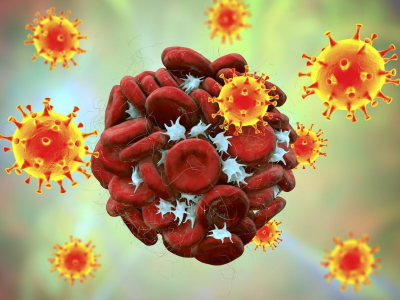Long COVID has been observed clinically for 5 years, but no standard definition exists, meaning wide variations exist in the literature, adding to confusion and a lack of clinical consensus. These are the findings from a study published yesterday in JAMA Network Open from a team led by researchers at the University of California-Los Angeles (UCLA).
The authors say that, absent a standard definition, the condition will continue to be both under- and over-recognized by both patients and clinicians.
Every major health organization, including the US Centers for Disease Control and Prevention (CDC) the World Health Organization, and national healthcare systems, has a different definition of what's known as long COVID or post-COVID condition, which are symptoms that appear after an initial infection that may be continuing or new. The long-term symptoms may improve over time or worsen.
The most widely agreed upon timeline suggests that long COVID is a constellation of symptoms present 12 or more weeks after initial infection.
Number of symptoms most important
“In the absence of an objective measure, like a blood test, or a uniform standard for measuring Long COVID, researchers and clinicians will need to decide which definition is best suited for their scientific question and be more transparent about the potential limitations of using a more vs less restrictive definition,” said study lead Lauren Wisk, PhD, an assistant professor at UCLA, in a university press release.
To conduct the study, the authors looked at 4,700 US patients in the CDC-funded INSPIRE cohort, and applied five published long-COVID definitions from studies conducted in the United States (including Puerto Rico), United Kingdom, Netherlands, and Sweden to each patient. The average age of participants was 40.4 years, 67.7% were female, and 68.9% were White.
Applying five published definitions for long COVID yielded a prevalence that ranged from 30.8% (95% confidence interval [CI], 29.3% to 32.4%) to 42.0% (95% CI, 40.4% to 43.7%) at 3 months, and 14.2% (95% CI, 13.0% to 15.6%) to 21.9% (95% CI, 20.5% to 23.5%) at 6 months post-infection.
The number of symptoms included in the studies ranged from 9 to 44, and the authors said the most relevant distinguishing feature between potential long-COVID cases (ie, among COVID-19–positive cases) and other post-illness conditions was symptom count.
Without a shared definition, we risk mislabeling patients and misguiding care.
"Individuals who were COVID-19 positive tended to have a greater mean number of reported symptoms than did their counterparts who were COVID-19 negative but who otherwise would have met the definition for long COVID,” the authors wrote.
A definition for long COVID will become even more necessary if effective treatments become widely available, the authors wrote.
"Without a shared definition, we risk mislabeling patients and misguiding care. This is more than an academic debate—it affects real people," Wisk said in the release.



















